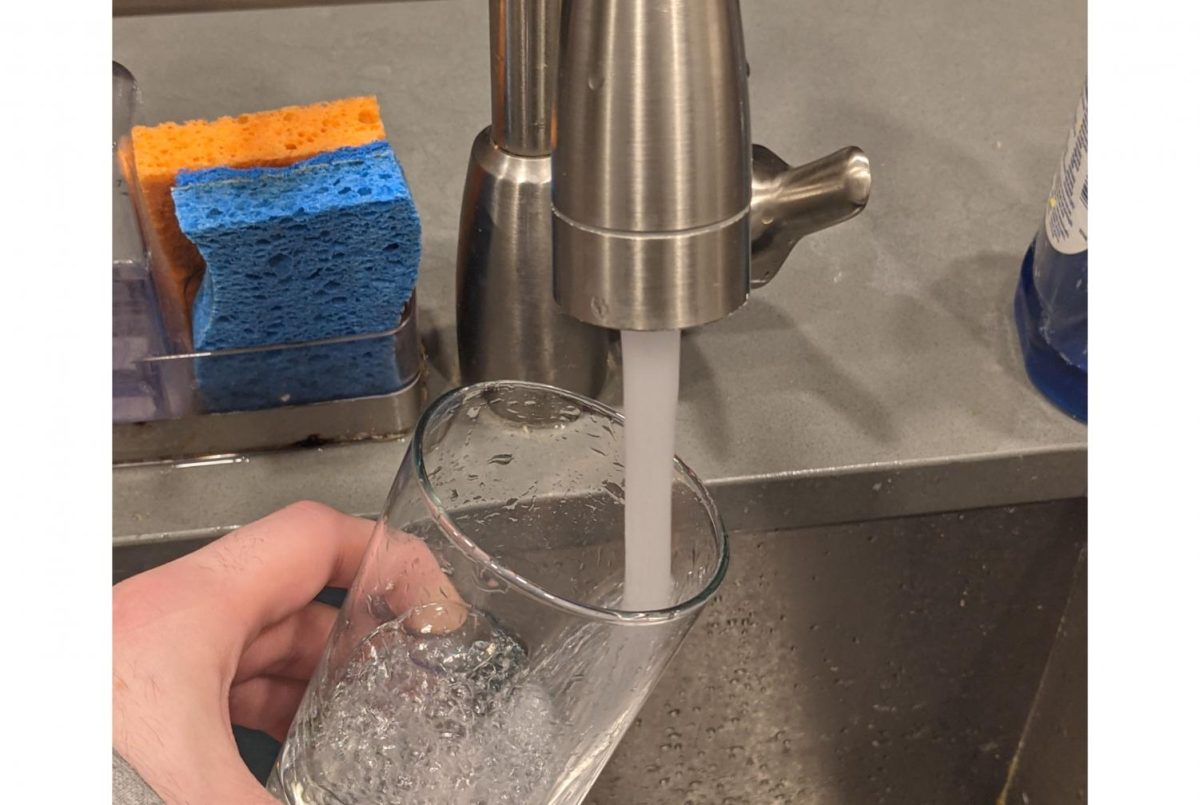Demand for clean water could turn it into scarce resource
People count on the water coming out of faucets in Oxford originates in a local underground aquifer and is filtered through the Oxford Water Treatment Plant, meeting all state and federal quality standards.
April 16, 2021
Do you truly know if the water you drink is safe to consume? Many of us take for granted the cleanliness of the water we drink on a day-to-day basis, but in many areas of the world, including our own country, water is not as easily accessible nor is it safe to drink.
New Jersey was the first state to introduce water treatment in the United States in 1908. The goal was to decontaminate community drinking water, a goal that was quickly adopted by thousands of other cities across the country after success in New Jersey.
The advent of clean water prompted a dramatic decrease in the number of infections from diseases like cholera and typhoid and established an improvement in the quality of water, sanitation and hygiene. The ability to decontaminate water was marked as one of the greatest achievements of the 20th century.
Last month, the Western Center at Miami University hosted a virtual mini-conference as a part of its ongoing education on water. The conference invited professionals to talk about the importance of water both culturally and environmentally as a part of the United Nations’ World Water Day activities. The event focused on “global accessibility to clean water, needed for drinking/sanitation and ecosystem biodiversity support, in the context of climate change.”
Several speakers, including the event’s keynote speaker, Judith LeBlanc, are descendants of Indigenous tribes with connection to the Myaamia tribe who resided in the area that is now Oxford. The connection to past traditions is what is needed to begin an understanding of the importance of water to all life on earth, said LeBlanc.
“In this moment of water crisis, climate chaos, gatherings such as these are so necessary to raise concerns, to raise consciousness and actually study what is working,” LeBlanc said. “Water has become a commodity bought, sold or controlled by few without consideration on the impact on culture or land.”
Diseases are not the only substances contaminating waters. The U.S. Clean Water Act was passed in 1972 and established a basic structure for the regulation of pollution discharge into waters across the U.S. as well as a basis for water quality. An increase in industrial companies prompted control of wastewater standards and pollutant discharge into waters.
The rise of water pollution and climate change, however, in recent years is increasing the need for clean water around the world, not only for human consumption but also for the preservation of wildlife. According to a United Nation’s World Water Development Report from 2015, experts speculated that there will be a 55% increase in clean water demand and that only 60% of the globe’s resources will be able to meet that demand.
The demand for clean water has even impacted first-world countries like the United States. In 2015, the city of Flint, MI declared a state of emergency after drinking water was tested for dangerously high amounts of lead contamination. The EPA deems a level below 15 parts per billion (ppb) of lead contaminants is safe for consumption. Some areas around the city of Flint saw levels in excess of 150 ppb of lead contamination. Outdated plumbing systems had been leaking lead into the drinking water supplies and bringing contaminated water into homes and businesses.
Climate change and pollution are affecting the ability of people and wildlife to access clean water and it is people’s job to keep Earth’s most precious resources clean and abundant for all life.
Water is the central theme this year at Miami University’s Western Center for Social Impact and Innovation, where educational programs discuss the importance of water across social and environmental intersections as the Earth’s precursor to all life.
The increase in climate change and the increase of water scarcity and clean water contamination begs the question about the health and safety of drinking water in our local areas.
The City of Oxford has a water treatment plant located off of Oxford Trenton Road. The plant is responsible for purifying the city water supply, which is drawn from a local well field. The wells provide water from an underground aquifer, which is essentially an underground storage of water formed from precipitation and soil hydration.
But is the water here safe to drink? According to assistant city manager Jessica Greene, it is.
“We are proud of the high-quality, safe water that our Water Treatment Plant produces,” said Greene.
According to the 2019 Oxford Water Quality Report, the City of Oxford met all the federal and state standards issued by the U.S. and Ohio Environmental Protection Agencies. In order to pass the expected water quality levels, regular samples of the water supply must be taken periodically. At no time throughout the testing period in 2019 did the water supply in Oxford contain excess levels of contaminants.
Over the course of 2020, the City of Oxford treated 821 million gallons of water to prevent contaminations and provided the city with 696 million gallons of clean and safe drinking water.














